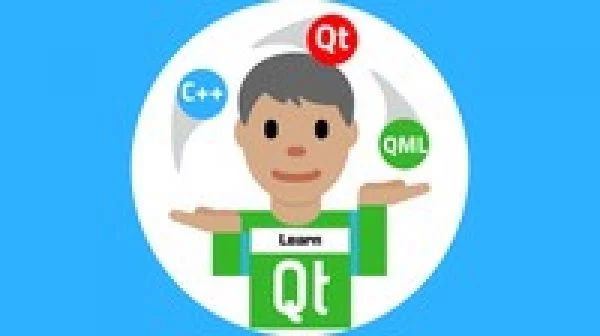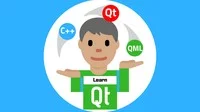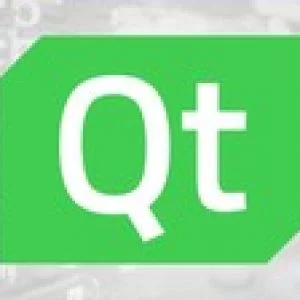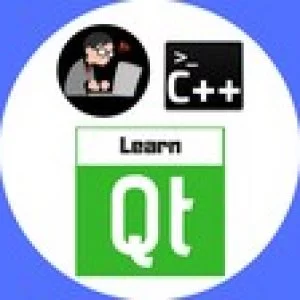
Special note : This course is based on Qt 5. Qt 6, released in December 2020 is the latest version. We are working on updates to take Qt 6 into account that will be completed over the next couple of months. In the mean time, we recommend using Qt 5 for the best experience with the course.
Qt Quick is the latest and greatest User Interface design technology from the Qt Framework.It is best known and used to build Fluid, Dynamic and cross platform user interfaces, that can run on Windows,Mac,Linux,Android,IOS and even embedded devices.
Qt Quick User interfaces can be easily extended or interfaced with a powerful C++ back end. Allowing you to take full advantage of what Qt has to offer.
This course will teach you various key techniques you need to know to make your powerful C++ back end and your shinny fluid Qt Quick User interface work together in one single piece of software product.You will be exposed to different facilities at your disposal in the Qt framework.Those will help you write Qt code in the recommended way. That is building fluid an eye catching UI in QML and connecting it a a powerful C++ code base for heavy operations.
Instructor Details
Courses : 6
Specification: Qt Quick and QML – Intermediate (Qt 5) : Interfacing to C++
|
11 reviews for Qt Quick and QML – Intermediate (Qt 5) : Interfacing to C++
Add a review Cancel reply
This site uses Akismet to reduce spam. Learn how your comment data is processed.

| Price | $15.99 |
|---|---|
| Provider | |
| Duration | 5.5 hours |
| Year | 2020 |
| Level | Intermediate |
| Language | English |
| Certificate | Yes |
| Quizzes | No |

$19.99 $15.99






Jiwei Cheng –
Great material, and nice pace
Lucas –
Very good course. I finished the Building Fluid User Interfaces with Qt Quick course and then this course helped me to improve so much my C++/QML integration.
Arturo Huerta –
All very well
Roman Vladimirov –
Great course, I learned lot about course domain.
Emrah Duatepe –
Amazing,I wasn’t able to manage to call C++ files from the QML and now it is going better.Thank you and keep going.
Angelo Carzis –
Another excellent course by Daniel. This course continues off from the Qt/QML intro course and is required to understand how QML interacts with C++ . Note: I completed both courses, one after the other. I do a lot of DB work. Having finished the 2 courses, I attempted to create a custom component which will display data retrieved from a DB (like a DataGrid control typically found in most frameworks) to start, static tabular data created in the C++ code would be fine. It did not appear to me that the GridView is suitable for this. Scanning the web, I found the TableView. Today, I tried to integrate the TableView into my qml test code along with the suitable C++ code. I wasn’t successful (but I don’t give up so easily). As a recommendation, Daniel, please add another section to this course covering how to display tabular data. At least in my view, this appears to be a common requirement of some desktop applications and I feel will benefit many students.
Mattia Dolce –
Si
Bojan Miljevic –
It jumps right in using C++ code. It would be better if code was explained more thoroughly. I never used C++ beofre, so I am pretty confused.
Senthilandavan Palani –
Thanks for this video. You have clearly explained why should we use setContextProperty and setContextObject setContextObject expose the objects completely. All property changes in c++ propagated to QML automatically. If we use, setCOntextProperty , we need to reset the property value changes explicitly
Hagin Haridas –
It would be good if more contents/topic (related to real time project ) added in session
Leonardo Noguera –
La explicaci n es muy clara y los ejemplos super tiles para aplicarlos en proyectos.